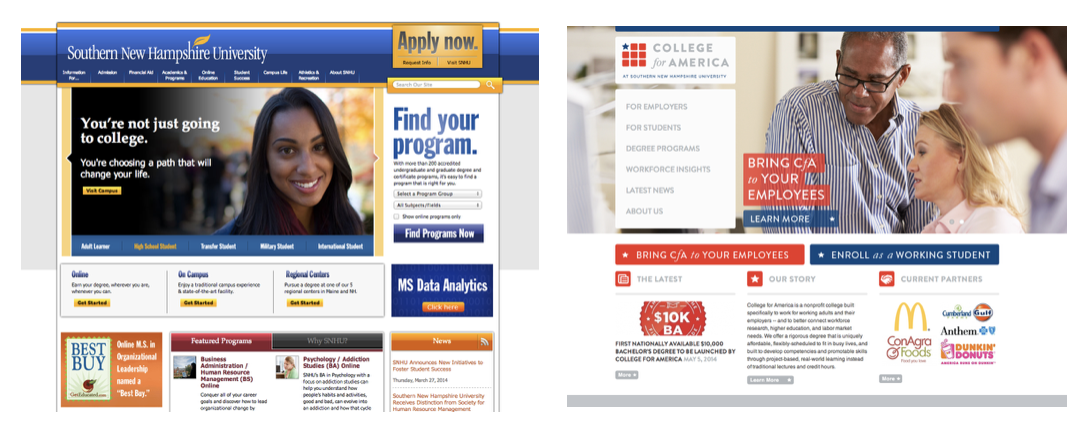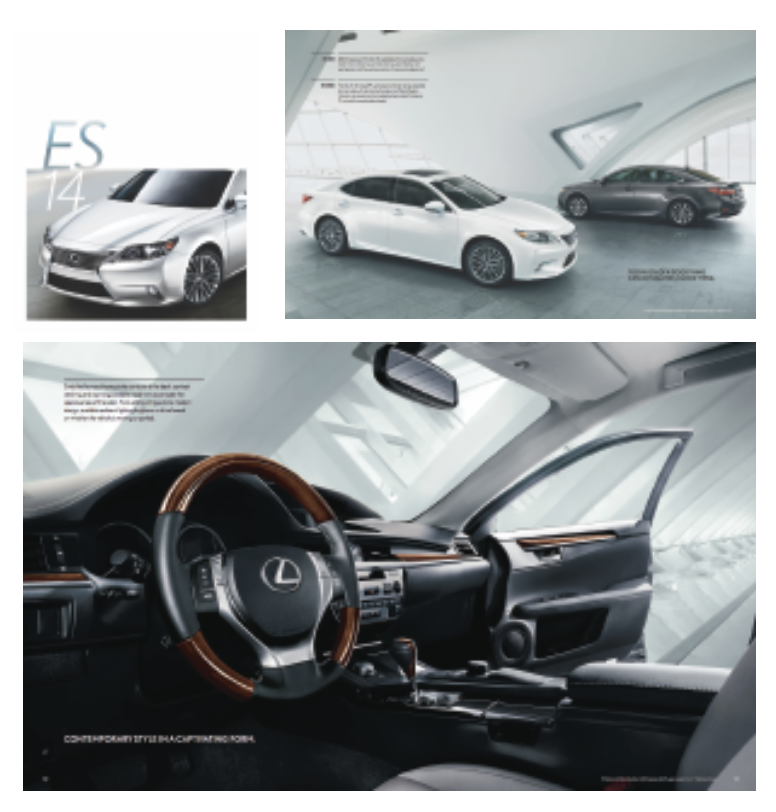Brand Fragmentation VS Sub-branding
Are you one organization or many? How similar should your offerings look? What brand strategy will lead to the most success for you?
Brand Fragmentation
What’s the difference between a Volkswagen, and Audi and a Porsche? They all are made by the same company with shared engineers and parts, but Volkswagen has been very strategic in how they’ve fragmented their brand.
“The Porsche Cayenne SUV shares a lot of parts under the skin and a lot of engineering with the Audi Q7 and the big VW SUV, they all share a platform called "PL71," and on the next generation of that platform there will also be a Bentley SUV, that will be an amazingly profitable product.” - From The Motley Fool (http://www.fool.com/investing/general/2014/03/27/why-porsche-spells-profit-at-volkswagen-ag.aspx)
One example in the education world Southern New Hampshire University (SNHU) and how they’ve branded their online program. SNUH’s traditional program and its online program (College for America) are in the same product space -- they are both offering a way to get a college degree. But, they do it in very different ways and for very different audiences at very different stages of life.
Even though these aren't textbook examples of brand fragmentation (since the College for America website makes mention being part of SNHU and normally there is no overt acknowledgement of the relationship between the brands), in all other ways, the brands are very individualized and streamlined for their niche of the college degree market.
Sub-branding
Some level of sub-branding is a very common approach used by many companies as well as many higher education institutions (particularly mid to large sized schools). With sub-branding, there are some unifying perceptual factors common to all the brands in terms of:
Messaging
Color palette
Typography
Photographic style
Structure & Style
But there is a spectrum of differentiation to allow each sub-brand to most effectively resonate with its marketing and audience goals.
Despite being its own entity in many ways (with its own leadership, budget, admissions efforts and programs, etc.), Tuck School of Business is also a sub-brand of Dartmouth College. Being a sub-brand does not diminish Tuck’s value in the market. In fact, the association of Tuck to Dartmouth (and vice versa) strengthen each other’s position.
What’s Right For You?
Regardless of whether you make cars or are in charge of a school or university brand, one of your first orders of business is answer three important questions about how each of your offerings fits into your overall picture.
What are the advantages of sub-brands with an association between different offerings?
What are the advantages of brand fragmentation?
What will give you the best brand value?
Once these questions are answered, your creative team will be able to focus on how to achieve your brand goals.
What Are the Advantages of Association Between Different Offerings?
Two of the most common reasons to closely associate products as sub-brands that are part of a larger brand, are 1.) to look bigger and 2.) to cross-pollinate success.
Steve Jobs famously called this the “halo effect,” though he didn’t actually coin the term. Jobs knew that because iPods were selling like hotcakes, it would lead to increased traffic at Apple stores and increased sales of Macintosh computers. He was right.
Once the iPod sales took off, the sales of Mac computers grew by leaps and bounds. Worth noting is that this growth happened during the recession of 2009. Source: http://goo.gl/3plXC2
What Are the Pros of Brand Fragmentation?
When you consider the logistic, mindshare and design costs of managing multiple individual brands in the same product space, why would you ever want to do it? Wouldn’t it be cheaper and easier to just pick a color palette, choose a typeface, take some pictures and call it a day? Same PowerPoints. Same business cards. Same website design.
The answer is personalization.
If you have the same exact audience for your products and services and strong brand recognition, you’ll reap great benefits from tying your brands closely together.
Unfortunately, most organizations have VERY different audiences. Selling a home computer to a senior citizen is VERY different than selling 1,000 computers to the US Army. The product is different. The pitch is different. The decision makers are different. The pain-points are different. Everything is different.
So how do you figure this out?
Always start with your customer -- the person who will be deciding if it’s worth it to invest time and/or money in your offering.
Can you tell the same story to each of them? Will they both respond the same way to the same imagery?
Branding is about telling stories. You tell them with words and pictures, but you tell them to real people in an effort to get them to feel something and do something.
Volkswagen could certainly get rid of the Volkswagen brand, and call every car they make a Porsche. Initially, they might even sell more cars because of it. But Porsche brings in 22% of their revenue, despite accounting for less than 2% of the actual cars that Volkswagen sells. A big reason for that is because of exclusivity.
When you fragment your brand you have the ability to be personalized and exclusive. Saying, “we only accept the top 15 applicants every year,” will get you a higher tier of people than saying, “You’ll be one of 350 people going through this program this year.”
Big is good, but so is small.
What Level of Association Will Give You the Best Brand Value?
It’s a spectrum. When Toyota launched the Lexus they made sure people knew it was created by Toyota to leverage their reputation for top quality, but they also very consciously changed the name of the car to denote a separate price-point.
Nowhere on the Lexus marketing materials did it mention Toyota, yet people knew. There was a wink and a nod to it. But the impression created to the market was: Lexus is different. It’s better. It costs more. It’s worth more.
There is intentionally no explicit mention of Toyota in the Lexus print materials.
Conversely, Apple is a premium brand. While their “official” mission statement is a bunch of marketing fluff, a line that’s often repeated by their leaders is that Apple is focused on "making the best products." Note they do not say the most products. They say the best.
While they don’t dive into creating competing products within their own line, they reach more market through the associations among their products. You’ll be hard pressed to interact with one of their products or employees without seeing a range of Apple’s other products. Use an iPhone to make a video? You should get an Apple TV to share that video with your family or a Mac to edit it. Have an iPod? Download music from iTunes. Have a Mac? Store your data in the iCloud.
The examples above look so obvious, but that’s partially because we’ve taken the discussion out of the abstract (of course we want a consistent brand) and turned it into specifics.
Would Mercedes drivers pay just as much for a Toyota? (Nope! We need a product that they will consider instead.)
When someone is buying an iPhone, is there an advantage to mentioning other Mac products? (Of course!)
Remember branding is about getting people to feel what you want them to feel and getting them to do what you want them to do. Everything else is a tool.






